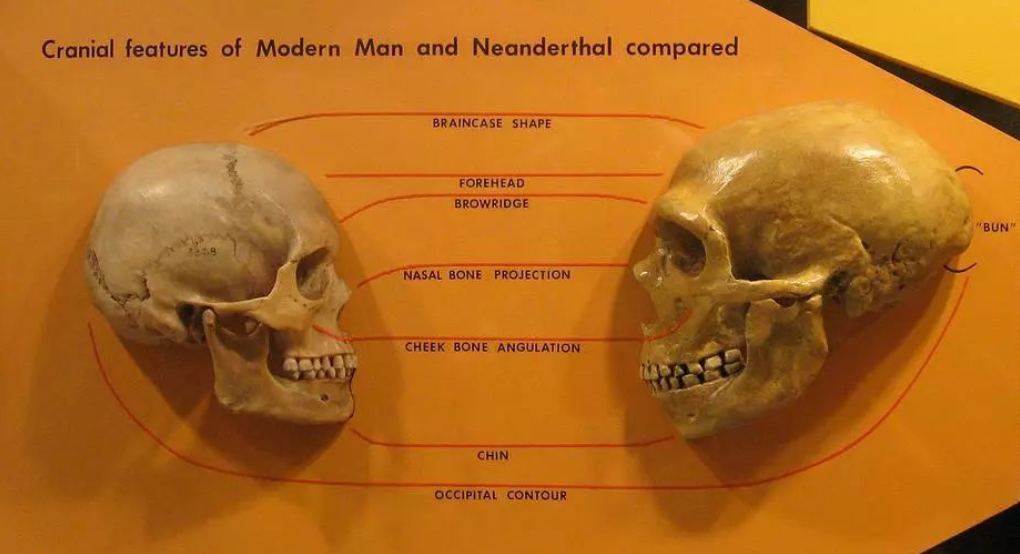Science: CRISPR gene editing creates Neanderthal “mini brains”
- Normal Liver Cells Found to Promote Cancer Metastasis to the Liver
- Nearly 80% Complete Remission: Breakthrough in ADC Anti-Tumor Treatment
- Vaccination Against Common Diseases May Prevent Dementia!
- New Alzheimer’s Disease (AD) Diagnosis and Staging Criteria
- Breakthrough in Alzheimer’s Disease: New Nasal Spray Halts Cognitive Decline by Targeting Toxic Protein
- Can the Tap Water at the Paris Olympics be Drunk Directly?
Science: CRISPR gene editing creates Neanderthal “mini brains”
Science: CRISPR gene editing creates Neanderthal “mini brains”, or reveals the mystery of human extinction.
In view of the fact that the onset of depression is the result of the close interaction of genetic and environmental factors, it is very consistent with the characteristics of intergenerational inheritance, suggesting that the genetic law of depression may be explained from the perspective of intergenerational inheritance.

Neanderthals (Homo neanderthalensis), or Neanderthal for short, are ancient humans that were active in Europe 200,000 years ago. They ruled the entire Europe, western Asia, and northern Africa from 120,000 years ago. Surprisingly, about 35,000 years ago, the living area of Neanderthals began to shrink rapidly, and eventually became extinct about 30,000 years ago.
It is worth noting that 35,000 years ago, it was the time when Homo sapiens, our modern humans, came to Europe. From this it is not difficult to speculate that the disappearance of Neanderthals is inseparable from Homo sapiens. In fact, many scholars also believe that it was the arrival of Homo sapiens that brought disaster to the Nepalese.
In contrast, how could the weaker Homo sapiens defeat and exterminate the stronger Neanderthals?
On February 12, 2021, researchers from the University of California, San Diego and other units published a research paper titled “Reintroduction of the archaic variant of NOVA1 in cortical organoids alters neurodevelopment” in the top international academic journal Science.
The research team discovered an important gene-NOVA1 between modern humans and the two extinct ancient humans, Neanderthals and Denisovans. Through CRISPR-Cas9 gene editing, the ancient human NOVA1 gene version was introduced into human pluripotent stem cells and cultivated into “brain organoids”, and the neural development, cell proliferation, and synaptic connection related genes of ancient human “brain organoids” were discovered The splicing has changed significantly.
The results showed that after the “separation” of humans and Neanderthals, the NOVA1 gene formed a stable new version in modern humans, which is likely to have a functional impact on the evolution of our human species.

Neanderthals have been extinct as a race for tens of thousands of years, but they are actually “ubiquitous”. In the short time when Homo sapiens and Neanderthals coexisted, they happened.
Intermarriage, so Neanderthal genes remain in Homo sapiens forever. DNA research analysis shows that we modern humans have 1% to 4% of Neanderthal genes.
However, scientists have very limited research methods on the brains of the extinct ancient humans, Neanderthals. They can often only rely on detecting the size and shape of fossil bones, because soft tissues such as the brain are difficult to preserve for tens of thousands of years. as long as.

Modern human skull (left) and Neanderthal skull (right)
It is very important to understand the genetic differences between ancient humans such as Neanderthals and modern humans. This helps to understand the uniqueness of humans, especially the uniqueness of the human brain.
First, the research team compared the genome sequences of modern humans, Neanderthals, and Denisovans, and discovered 61 genes that are always different between modern humans and ancient humans. One of them is called
NOVA1
The gene of is very special. The gene is involved in the formation of synapses or neural connections in the brain. Changes in its activity are associated with neurological diseases.
Almost all modern humans have a modern version of the NOVA1 gene, which is different from ancient humans. This shows that the NOVA1 gene provides a huge advantage in the evolution of modern humans.
So the question is, what kind of advantage does it provide?
Next, the research team introduced Neanderthal and Denisovan NOVA1 gene forms into human pluripotent stem cells through CRISPR-Cas9 gene editing technology, and then cultivated these human pluripotent stem cells into “
Brain organoids
“These organoids are clumps similar to brain tissue with a diameter of about 5 millimeters. Although these brain organoids are far from the real brain, they can also serve as an effective model for studying the brain.
It is very obvious that the brain organoids expressing the variants of the ancient human NOVA1 gene are not the same as modern human brain organoids. Modern humans have a smooth spherical shape, while ancient human organs have rough and complex indications. , And smaller in size, which may be due to differences in cell growth and reproduction.

Neanderthal brain organoids (left), modern human brain organoids (right)
In addition to the visible difference in appearance, the two types of organs also have significant differences at the molecular level. The research team found that there are 277 gene activities between ancient human brain organoids and modern human brain organoids, some of which are known to be Affect neuron development and connection. These differences resulted in the ancient human brain organoids containing different levels of prominent proteins, and their neurons were less activated.

In general, the study evaluated the role of the ancient human gene in neurodevelopment by reintroducing the ancient version of the NOVA1 gene found in Neanderthals and Denisovans, and using human brain organoids. The results showed that after the “separation” of humans and Neanderthals, the NOVA1 gene formed a stable new version in modern humans, which is likely to have a functional impact on the evolution of our human species.
(source:internet, reference only)
Disclaimer of medicaltrend.org



